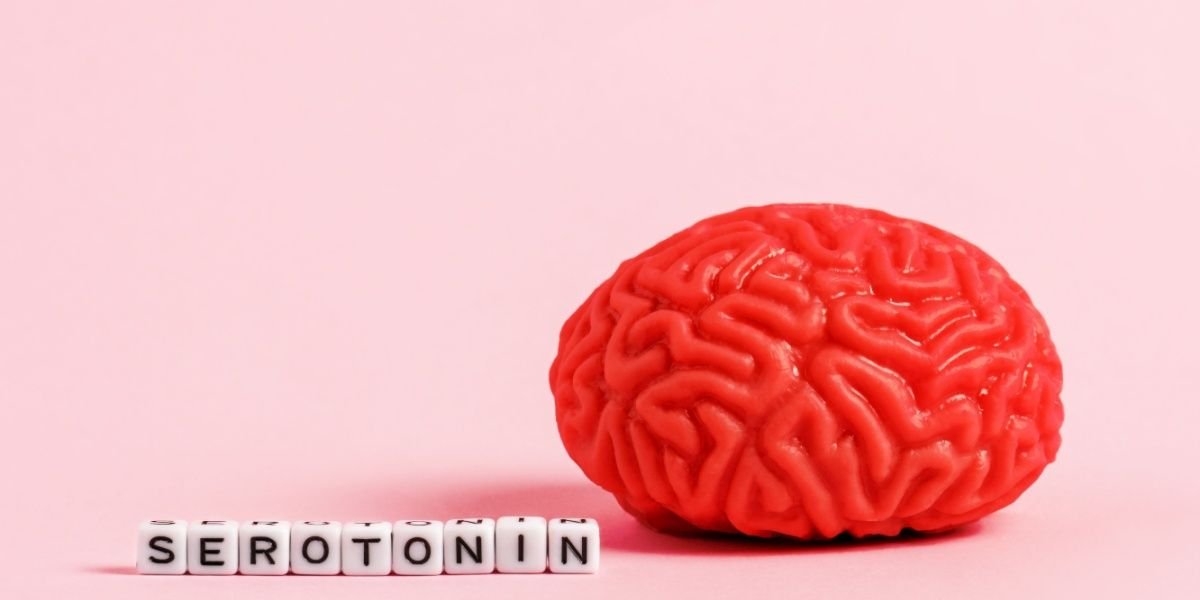Around one-third of patients seeking treatment for major depressive disorder also have a substance use disorder, with the conditions often amplifying each other. Research has linked the co-occurrence of depression and addictions to more severe depressive symptoms, greater impairment, and a higher risk of suicide and relapse, and found that, for many people, depression should be decisively treated from the outset of addiction rehabilitation.
- People with depression may experience guilt, regret, lack of motivation, anxiety, lethargy, unexplained aches and pains, insomnia or oversleeping, hopelessness, and suicidal thoughts.
- Because drugs and alcohol release the feel-good neurotransmitter dopamine, people with untreated depression may turn to them to boost their mood.
- In a study of 188 alcohol-dependent people seeking treatment for addiction, 63.8% met the criteria for depression, with symptom severity correlated with the severity of their addiction.
.png?v=1722502817)
Understanding depression
Depression is a mental disorder characterized by pervasive and persistent sadness, low self-esteem, and a lack of interest and pleasure in once enjoyable activities.
People with depression may also experience guilt, regret, lack of motivation, anxiety, lethargy, unexplained aches and pains, insomnia or oversleeping, hopelessness, and suicidal thoughts.
Depression doesn’t have one single cause. Rather it likely emerges from an interaction of genetic vulnerability, environmental factors, and stressful life events. Adverse childhood experiences, including abuse and neglect, are particularly associated with the development of depression later in life and greater severity of symptoms.
Depression and addiction: which comes first?
For most people with a dual diagnosis, or co-occurring disorder, depression and addiction are deeply intertwined, often making it impossible to suss out which came first.
Because drugs and alcohol release the feel-good neurotransmitter dopamine, people with untreated depression may turn to them to boost their mood. This self-medication can spiral into psychological and eventually physical dependence.
Addiction itself can then cause and aggravate symptoms of depression. This works neurologically: after being saturated with dopamine through substance use, the brain will down-regulate dopamine systems, meaning you no longer experience pleasure from other things.
Furthermore, withdrawal from drugs, particularly alcohol, stimulants, and opioids, can replicate and intensify symptoms of depression. Adverse social effects of addiction, from broken relationships to financial distress, can also fuel depression.
Depression and addiction may also originate independently in the same person, then become enmeshed. They have overlapping risk factors, including childhood trauma and abuse and stressful life events.
For some people, abstinence from the abused substance for a sustained period—in studies, one to four weeks—can produce a marked lifting of their depressive symptoms. In these cases, depression is a type of substance-induced mood disorder.
In a study of 188 alcohol-dependent people seeking treatment for addiction, 63.8% met the criteria for depression, with symptom severity correlated with the severity of their addiction. Six months after detoxification and following the completion of addiction treatment, that had fallen to 30.2%. For that third, depression wasn’t a side effect of alcohol. [2]
Indicators of depression not caused by substance abuse
The following may indicate your depression isn't solely emerging from drug abuse and requires specialized treatment:
- You had symptoms of depression before you started using substances.
- You began using drugs or alcohol to boost your mood, ease anxiety, or address other symptoms of depression.
- You have a family history of mental illness.
- You’ve experienced abuse or trauma.
- Your depressive symptoms don’t improve following detoxification and in fact, may worsen as you’re no longer self-medicating.
Alcohol and depression
As many as two-thirds of alcohol-dependent people may meet the criteria for clinical depression. Mental illness, including depression, has been found to increase the use of alcohol by 20%, according to research by the think tank the National Bureau of Economic Research.[3]
For many, this is because alcohol and the negative effects of addiction create neurological and personal conditions for depression.
This can happen on a molecular level: alcohol distorts the chemistry of the brain. In the short run, this can mean hangovers accompanied by anxiety and guilt. In the long run, it can mean a depletion of positive neurotransmitters serotonin and dopamine.
Additionally, some of the fallout of alcohol abuse, including relationship breakdown, money problems, legal trouble, deteriorating health, isolation, and suicidal ideation are known risk factors for depression.
For around a third of people with alcohol dependencies, depression isn’t just a side effect of alcohol abuse, although its symptoms may be exacerbated by drinking. These people may have turned to alcohol to improve their mood, then become psychologically addicted and eventually chemically dependent.
Read here to learn more about alcohol and mental health.
Drugs and depression
Some studies suggest that depression is even more prevalent among people with drug addictions than alcoholics. Depression is especially common among women who abuse stimulants (79% depressed) and prescription drugs (68.5%) and men who abuse opioids (63%) and prescription drugs (62%).[4]
Similar to alcohol, drug use and depression reinforce each other. People use drugs to counteract the symptoms of depression: stimulants to give them energy and enhance their mood, sedatives to bring pleasure, and ease worries.
These effects are only temporary and establish dysfunctional brain circuitry that makes us even sadder and more lethargic without drugs.
We also see these effects after acute intoxication. The high from stimulants such as cocaine and MDMA is often replaced with a comedown as your neurotransmitters revert to normal, with symptoms that look like depression, including low mood, fatigue, and anxiety. Some people return to the stimulant or to another addictive drug to counteract these effects, beginning a cycle of drug-taking.
Following prolonged drug use, these brain changes can last for months after cessation. After detoxing from cocaine, in particular, some people may experience low mood and apathy for weeks to months.
In some cases, the relationship between drug use and depression is even more complex, intertwined with the close link between depression and pain. 2017 research revealed that 51% of opioid prescriptions in the US go to people with depression and other mood disorders. In total, 19% of Americans with mood disorders use opioids, compared to 5% of the general public.[5] Many opioid addictions begin with chronic pain—which can both cause depression and is experienced more strongly by people with depression.
read here to learn more about drug abuse and mental health.
Types of depression
Not all depression looks the same or is treated the same.
- Major Depressive Disorder (MDD), also known as clinical depression, is the most recognizable type of depression. Symptoms include low mood, lack of interest in previously enjoyable activities, fatigue, changes in weight and sleep, feelings of guilt and worthlessness, and thoughts of suicide.
- Dysthymia, also known as persistent depressive disorder, is a milder type of depression that lasts for one to two years.
- Bipolar Disorder, also known as manic depression, is a mood disorder characterized by alternating periods of high energy (mania) and depression.
- Atypical Depression shares many of the symptoms of major depression but patients’ low mood improves in response to positive events. Atypical depression also features weight gain and increased appetite, increased sleep, and a heavy feeling in the limbs.
- Substance-Induced Depression is caused by taking an illicit or prescribed drug.
- Seasonable Affective Disorder (SAD): a type of depression that occurs during the darker months of winter.
- Psychotic Depression: like major depression but with psychotic symptoms such as hallucinations, delusions, and paranoia.
- Peripartum Depression: a period of extreme sadness, anxiety, and indifference experienced by a woman after childbirth.
Depression and addiction recovery
Depression can significantly complicate recovery from addiction. It’s associated with more severe symptoms, lower social functioning, and worse treatment outcomes.
Traditionally, depression encountered among addicts was assumed to be substance-induced depression that would relent following abstinence. However, evidence suggests that like primary depression, substance-induced depression is associated with worse addiction treatment outcomes. Substance-induced depression is also a risk factor for developing major depression down the road.[6] Treatment for it can be beneficial and effective.
In general, the National Institute on Drug Abuse (NIDA) recommends concurrent treatment of mental health disorders, including depression, and substance abuse.[7]
Treatment for depression
Treatment for depression and addiction may include:
- Talking therapy: such as CBT, teaches you to identify and reframe negative thoughts and behaviors that undergird your depression and substance abuse and develop new coping strategies.
- Medication: for major depression, this might mean an antidepressant, while people with bipolar disorder might be prescribed a mood stabilizer or antipsychotic. These drugs don't have addictive potential. They may be prescribed alongside drugs that help you overcome withdrawal symptoms and cravings, such as naltrexone for opioid and alcohol addiction.
- Mutual help groups
- Life coaching and skills
- Alternative therapies: such as yoga, art, acupuncture, or dietary supplements and herbal remedies.
If you are suffering from a dual diagnosis of addiction and depression, there are many rehab facilities and treatments that can help. Visit our rehab directory to find a treatment option for dual diagnosis near you today.


-guide-detail.jpg?v=1728036834)

-guide-detail.jpg?v=1722503025)